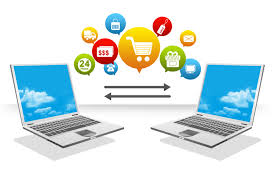The Power of Digital Influencer Marketing
In today’s digital age, traditional advertising methods are no longer as effective in reaching and engaging with target audiences. This shift has led to the rise of digital influencer marketing as a powerful strategy for brands to connect with consumers in a more authentic and impactful way.
Digital influencers, also known as social media influencers, have amassed large followings on platforms such as Instagram, YouTube, and TikTok. These individuals have built credibility and trust with their audience through their content and personality, making them influential voices in their respective niches.
Benefits of Digital Influencer Marketing
One of the key benefits of digital influencer marketing is the ability to reach a highly targeted audience. By partnering with influencers whose followers align with your brand’s target demographic, you can effectively expand your reach and drive engagement.
Furthermore, digital influencer marketing offers a level of authenticity that traditional advertising often lacks. When an influencer promotes a product or service, their audience perceives it as a genuine recommendation rather than a paid advertisement. This authenticity can lead to higher levels of trust and loyalty among consumers.
Best Practices for Digital Influencer Marketing
When implementing a digital influencer marketing campaign, it is important to carefully select influencers whose values and content align with your brand. Authenticity is key in influencer partnerships, so choosing influencers who genuinely resonate with your brand message is crucial for success.
Additionally, clear communication and transparency are essential in influencer collaborations. Clearly outline expectations, deliverables, and compensation agreements to ensure a smooth partnership process and avoid any misunderstandings down the line.
The Future of Digital Influencer Marketing
As social media continues to evolve and new platforms emerge, the landscape of digital influencer marketing will also continue to change. Brands that adapt to these shifts and embrace innovative strategies for working with influencers will be well-positioned to succeed in this dynamic space.
In conclusion, digital influencer marketing offers brands a unique opportunity to connect with consumers in an authentic and engaging way. By leveraging the influence and reach of digital influencers, brands can enhance their visibility, credibility, and ultimately drive growth in an increasingly competitive digital marketplace.
Understanding Digital Influencer Marketing: Top 9 Frequently Asked Questions
- What is an example of influencer marketing?
- Do influencers do digital marketing?
- How is influencer marketing used?
- What is influencer marketing in digital marketing?
- What are the 4 types of influencers?
- What means digital influencer?
- How do I start influencer marketing?
- How to become digital influencer?
- What is the use of influencers in digital marketing?
What is an example of influencer marketing?
An example of influencer marketing can be seen in the collaboration between a popular beauty influencer and a cosmetic brand. In this scenario, the beauty influencer creates engaging content, such as makeup tutorials and product reviews, featuring the brand’s products. By leveraging the influencer’s credibility and reach, the cosmetic brand is able to showcase its products to a wider audience in an authentic and relatable way. This partnership not only boosts brand awareness but also drives consumer interest and engagement, ultimately leading to increased sales and brand loyalty.
Do influencers do digital marketing?
Influencers play a significant role in digital marketing by leveraging their online presence and influence to promote products and services to their followers. Through sponsored posts, product reviews, affiliate marketing, and collaborations with brands, influencers effectively engage with their audience and drive consumer behaviour. By creating authentic and relatable content, influencers seamlessly integrate marketing messages into their platforms, making them valuable partners for brands looking to reach target audiences in a more personalised and engaging manner.
How is influencer marketing used?
Influencer marketing is utilised as a strategic approach by brands to leverage the influence and reach of digital influencers in order to promote their products or services to a targeted audience. Brands collaborate with influencers who have established credibility and a loyal following on social media platforms to create authentic content that resonates with their audience. This partnership allows brands to tap into the influencer’s engaged community, increase brand awareness, drive engagement, and ultimately, generate leads and sales. By harnessing the power of influencer marketing, brands can effectively connect with consumers in a more organic and relatable manner, leading to greater brand visibility and customer trust.
What is influencer marketing in digital marketing?
In the realm of digital marketing, influencer marketing refers to a strategic approach where brands collaborate with individuals who have established credibility and influence within specific online communities or social media platforms. These digital influencers, through their engaging content and authentic connection with their followers, have the power to sway consumer behaviour and preferences. By partnering with influencers, brands can leverage their reach and impact to promote products or services in a more organic and relatable manner, effectively tapping into the influencer’s audience to drive brand awareness, engagement, and ultimately, conversions.
What are the 4 types of influencers?
In the realm of digital influencer marketing, influencers can be categorised into four main types based on their reach, engagement, and content style. The first type is the Mega-Influencers, who have a massive following of over a million followers and typically include celebrities and well-known personalities. Next are Macro-Influencers, who have follower counts ranging from 100,000 to one million and often focus on specific niches. Micro-Influencers have smaller but highly engaged audiences, typically between 10,000 to 100,000 followers, making them ideal for niche marketing. Lastly, Nano-Influencers have the smallest following of under 10,000 followers but boast high engagement rates and strong relationships with their audience. Each type of influencer offers unique advantages for brands looking to connect with their target audiences effectively in the digital space.
What means digital influencer?
A digital influencer is an individual who has established credibility and influence within a specific niche or industry through their online presence, typically on social media platforms such as Instagram, YouTube, or TikTok. These influencers have built a loyal following by creating engaging content that resonates with their audience, allowing them to sway opinions, shape trends, and drive purchasing decisions. Digital influencers often collaborate with brands to promote products or services to their followers in a more authentic and relatable manner compared to traditional advertising methods.
How do I start influencer marketing?
To embark on influencer marketing, it is essential to begin by defining your goals and identifying the target audience you wish to reach through influencer partnerships. Conduct thorough research to find influencers whose values, content style, and audience align with your brand. Establish clear objectives for the campaign, whether it be increasing brand awareness, driving sales, or expanding reach. Develop a comprehensive strategy outlining the type of content collaboration, budget allocation, and key performance indicators to measure success. Effective communication with influencers and transparent expectations are crucial for building successful partnerships in influencer marketing. By carefully planning and executing your influencer marketing strategy, you can leverage the power of digital influencers to enhance your brand’s visibility and engagement with your target audience.
How to become digital influencer?
Becoming a digital influencer requires a combination of dedication, authenticity, and strategic content creation. To start on the path to becoming a digital influencer, it is essential to identify your niche and target audience. Develop your unique voice and style that resonates with your followers, and consistently create high-quality content that adds value to their lives. Engage with your audience regularly, build relationships with other influencers in your niche, and stay up-to-date with industry trends. Authenticity is key in building trust with your audience, so be genuine and transparent in your interactions. By staying committed to providing valuable content and fostering a strong community around your brand, you can establish yourself as a successful digital influencer over time.
What is the use of influencers in digital marketing?
In digital marketing, the use of influencers plays a crucial role in enhancing brand visibility, credibility, and engagement with target audiences. Influencers have the ability to reach and connect with consumers on a personal level, leveraging their authenticity and influence to promote products or services in a more relatable way. By partnering with influencers who resonate with their target demographic, brands can tap into the influencer’s loyal following and leverage their influence to drive brand awareness, increase customer trust, and ultimately boost sales. Influencers act as trusted advocates for brands, bridging the gap between businesses and consumers in a crowded digital landscape.


